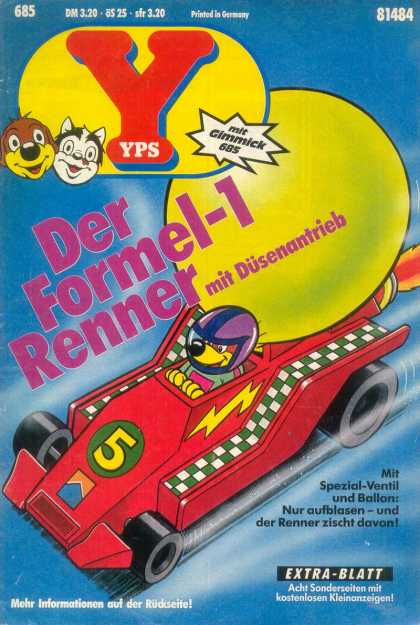For our Science fair this September, our Physics teacher asked us to build a mini balloon-run car. Of course materials should be as recycled as possible but I can still buy some stuff from the store I guess. Basically the car runs, as I have said, on air blown into a small balloon. When the air is released pointing backwards obviously the car would go forward. Simple, right? Well we have to submit THREE entries per group, and there we need some help.. The three cars are:
1.) A car that would run the most distance in one go. I was thinking it should be light and the car must have the least amount of friction so it would stop at a later time. What materials would you recommend for this? And what should the wheels be made of? I'm thinking of water bottle caps, but are there any more...? Secondly, would aerodynamics affect the car? Anyways the car is really small, and it wouldn't really run that fast, but still. (I was also thinking the design would be an XRR. )
)
2.) A car that would run the fastest. I don't know if our teacher would allow two balloons on this one... Hehehe. Again, should probably be light, what materials would you recommend again? This one I'm planning to base on an F1 car.
3.) A show car. We just have to show this on the Science fair's actual event.
Help would pretty much be appreciated. Thanks in advance...
EDIT: YES the balloon has to be inflated.
Regards,
Ryder
1.) A car that would run the most distance in one go. I was thinking it should be light and the car must have the least amount of friction so it would stop at a later time. What materials would you recommend for this? And what should the wheels be made of? I'm thinking of water bottle caps, but are there any more...? Secondly, would aerodynamics affect the car? Anyways the car is really small, and it wouldn't really run that fast, but still. (I was also thinking the design would be an XRR.
 )
)2.) A car that would run the fastest. I don't know if our teacher would allow two balloons on this one... Hehehe. Again, should probably be light, what materials would you recommend again? This one I'm planning to base on an F1 car.
3.) A show car. We just have to show this on the Science fair's actual event.
Help would pretty much be appreciated. Thanks in advance...

EDIT: YES the balloon has to be inflated.
Regards,
Ryder



